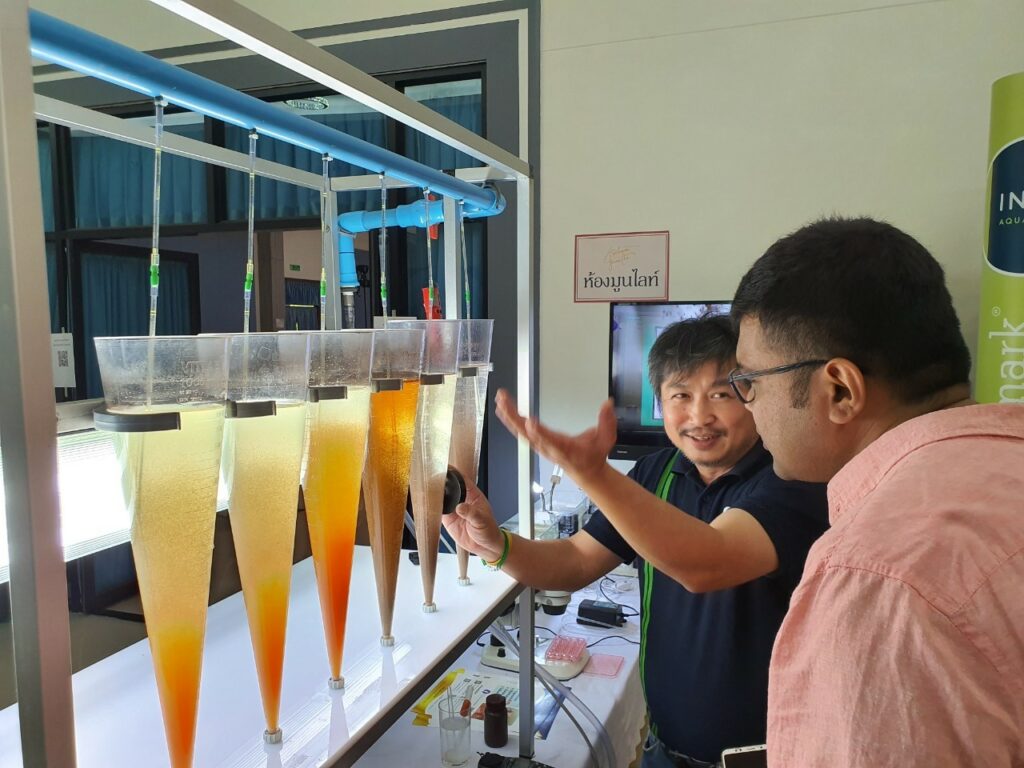Hatch & Collect
Artemia are predominantly collected from the wild during their cyst stage. The embryos in the cyst develop up to gastrula stage, a point where they reach 4,000 cells whose development has been arrested by greatly reducing the metabolism of the embryo to almost a level which is close to zero (biologists call this ‘diapause’). This is the stage at which they can be harvested, processed, conditioned and stored as dormant or quiescent live organisms, ready to be used as feed in fish and shellfish hatcheries. These dormant encysted embryos are capable of severe dehydration.
Hatching
When outside conditions improve to the point where it is safe for the brine shrimp larvae to come out of their shell, the embryos will respond to a number of triggers and resume their metabolism. They will take up water, start to metabolize and convert their carbohydrate reserves, eventually increasing the osmotic pressure inside the cyst up to the point that the cyst shell bursts and the nauplius still enclosed in the hatching membrane (also called umbrella stage) is released from the cyst shell. Within the hatching membrane one can see the nauplius moving its appendages.
Within the next hours the hatching enzyme is secreted in the head region of the nauplius and the free-swimming instar I nauplius is released. Several elements play a crucial role in this delicate process, that aquaculture professionals need to imitate to optimally hatch Artemia cysts.
The presence of unhatched Artemia cysts and shells in the live feed entails several risks:
- Increased biosecurity risk due to transfer of organic matter and high bacterial load
- Maintenance problems (can foul the tank)
- Complex chemical and non-sustainable way to decapsulate cysts
- Tedious and cumbersome separation of nauplii and cyst shells after hatching
- Separation techniques to remove shells, reduce viability and survival of the nauplii
- Possible infections
- Gut obstruction with unhatched cysts and empty shells leading to mortality
- Failed ingestion of cysts and shells by fish

Selecting the right Artemia products and hatching technologies is crucial to minimize risks and improve efficiency.
Find out moreCollecting
Traditional methods to collect Artemia
Double-sieving: the double trouble method
Sustainable solutions to collect Artemia
SEP-Art® Technology
The patented SEP-Art® technology is a ground-breaking method to separate Artemia nauplii from their cysts using magnets.
- Producing high quality nauplii
- Maintaining the vitality of the Artemia nauplii
- Reducing losses
- Speeding up the process of handling and harvesting
- Ensuring safety for workers
- Limiting environmental impact


